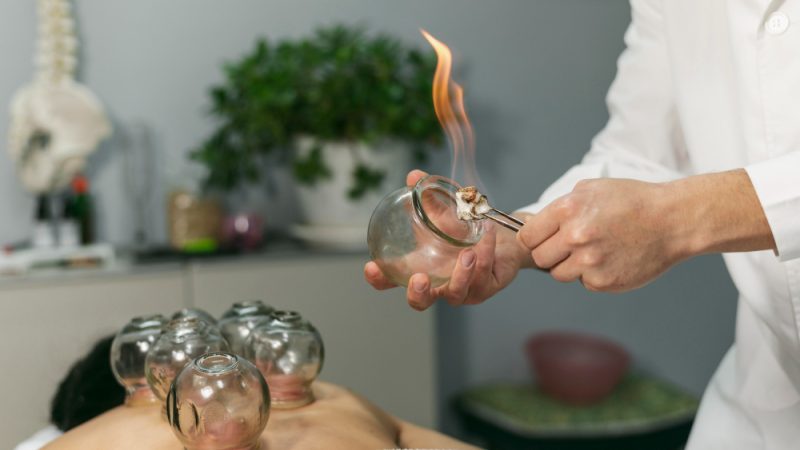Cupping therapy has been practiced for thousands of years, Cupping for Fat Loss rooted in traditional Chinese and Middle Eastern medicine. Once used mainly for pain relief, detoxification, and improving circulation, cupping is now gaining popularity in the realm of beauty and body sculpting — especially in the area of fat loss.
But does it really work? And is it safe for everyone?
Before you book your first session or invest in a cupping set, there are some key things you need to understand. In this article, we cover the 10 most important facts about cupping for fat loss to help you make an informed decision.
1. Cupping Doesn’t Burn Fat — It Boosts Circulation
Let’s start with a reality check: cupping does not melt or burn fat directly. Instead, it enhances blood circulation, stimulates the lymphatic system, and encourages cell regeneration. This can make the treated areas appear firmer and more contoured, which creates the illusion of fat loss.
The bottom line:
Cupping supports body sculpting but should not be considered a standalone fat-burning solution.
2. It’s Often Used for Cellulite Reduction
One of the most popular uses of cupping in beauty is cellulite reduction. The suction created by the cups lifts the skin and underlying tissue, helping break down fat deposits and improve lymphatic drainage.
How it helps with cellulite:
Promotes blood flow to stagnant fat pockets
Improves skin tone and texture
Reduces the appearance of dimples
With regular sessions, some users report a visible reduction in cellulite, especially on thighs and buttocks.
3. There Are Two Main Types: Dry and Wet Cupping
If you’re new to cupping, you should know the difference:
Dry cupping (most common for fat loss) uses suction to create a vacuum effect on the skin.
Wet cupping involves making tiny incisions in the skin to release blood (not recommended for aesthetic fat loss goals).
Pro tip:
Stick with dry or massage cupping if your goal is fat loss, body contouring, or skin tightening.
4. Results Vary From Person to Person
Some people see smoother skin and reduced puffiness after just a few sessions, while others may need multiple weeks to notice a difference. Your age, metabolism, hydration level, diet, and lifestyle habits all affect your results.
What influences effectiveness:
How frequently you do cupping
Whether you combine it with exercise and a clean diet
Your skin’s elasticity and collagen levels
Cupping is best used as a support tool, not a miracle fix.
5. Cupping Can Cause Temporary Bruising
Yes, those round marks you’ve seen on athletes or celebrities are real. Cupping often leaves circular bruises or discoloration on the skin, which can last from a few days to a week.
Why it happens:
The suction pulls blood to the surface, causing minor capillary damage. It’s harmless, but some people find it cosmetically unappealing.
Tip:
If you have sensitive skin or bruise easily, talk to your therapist about gentler suction levels.
6. You Can Do It at Home — But Caution Is Key
Home cupping kits are widely available online, including silicone or suction cups that are easy to use. However, using them incorrectly can lead to skin irritation, broken capillaries, or even burns if heat is involved.
If you DIY:
Always clean the skin and cups
Use a body oil for smoother gliding
Limit sessions to 5–15 minutes
Avoid the spine, inner thighs, or bony areas
Beginners should consider seeing a professional before self-administering.
7. It Works Best When Combined With Other Fat-Loss Strategies
Cupping can enhance your fat-loss results but won’t replace the need for proper diet and exercise. Think of it as a complementary treatment, like a massage after working out.
Combine cupping with:
Strength training and cardio
Clean, anti-inflammatory diet
Hydration and proper sleep
Lymphatic drainage massage
Used consistently, it may amplify the effects of your current fat-loss regimen.
8. Hydration Before and After Is Essential
Cupping promotes detoxification by stimulating lymphatic drainage. To support this process, you must drink plenty of water before and after your session.
Why it matters:
Helps flush out toxins
Reduces soreness and bruising
Boosts overall results
Aim to drink at least 2–3 liters of water daily, especially on the days you have a cupping session.
9. Not Everyone Is a Good Candidate
While cupping is generally safe, it’s not suitable for everyone. Avoid cupping if you:
Are pregnant (without professional approval)
Have varicose veins or broken capillaries
Have a bleeding disorder or take blood thinners
Have skin infections, wounds, or burns
Consult your doctor if you have any medical conditions or are unsure whether cupping is safe for you.
10. Consistency Is Key for Visible Results
Just like any wellness or beauty treatment, consistency matters. One cupping session won’t deliver long-term fat loss. Most professionals recommend 2–3 sessions per week for at least 4–6 weeks to see noticeable changes.
Expectations:
Temporary smoothing or de-puffing may happen immediately
Long-term contouring effects take time
Maintenance sessions can help preserve results
Stick to a routine and document your progress with photos to track changes.
Conclusion: Is Cupping Worth It for Fat Loss?
Cupping for fat loss isn’t a magic solution, but it can be a powerful ally in your body-sculpting journey. By improving circulation, reducing fluid retention, and supporting detoxification, cupping helps your body look and feel more toned.
Used regularly and responsibly—especially alongside a healthy lifestyle—it may improve the appearance of cellulite, tighten the skin, and boost your confidence. However, it’s important to manage expectations and view cupping as part of a holistic approach, not a shortcut to weight loss.
Before you start, do your research, consult a trusted practitioner, and listen to your body. Because ultimately, the best results come from safe, sustainable habits.
FAQs
1. Can cupping actually help you lose weight?
Cupping doesn’t directly cause fat loss but can support the process by improving circulation, reducing fluid retention, and enhancing skin tone. It should be combined with exercise and a balanced diet.
2. How often should I do cupping for fat loss?
For best results, 2–3 times per week is recommended during the first month. After that, weekly maintenance sessions can help you maintain the results.
3. Are the bruises from cupping harmful?
The circular marks left by cupping are generally harmless and fade within a few days. They are caused by blood vessels breaking under suction but don’t indicate damage to deeper tissues.
4. Is cupping painful?
Cupping may feel like a tight pulling sensation on the skin. Most people find it relaxing, but those with low pain tolerance may feel discomfort, especially with stronger suction levels.
5. Can I use cupping on my stomach or thighs?
Yes! The stomach, thighs, buttocks, and arms are common areas for cupping to aid in contouring. Just be sure to follow proper technique and avoid placing cups over bones or sensitive areas.
Also read : Luxury Shoes: 10 Bold Looks for Red Carpet Glam





